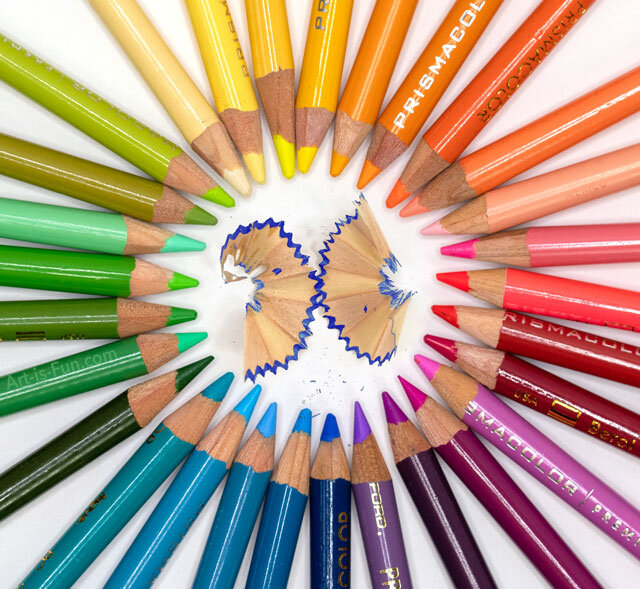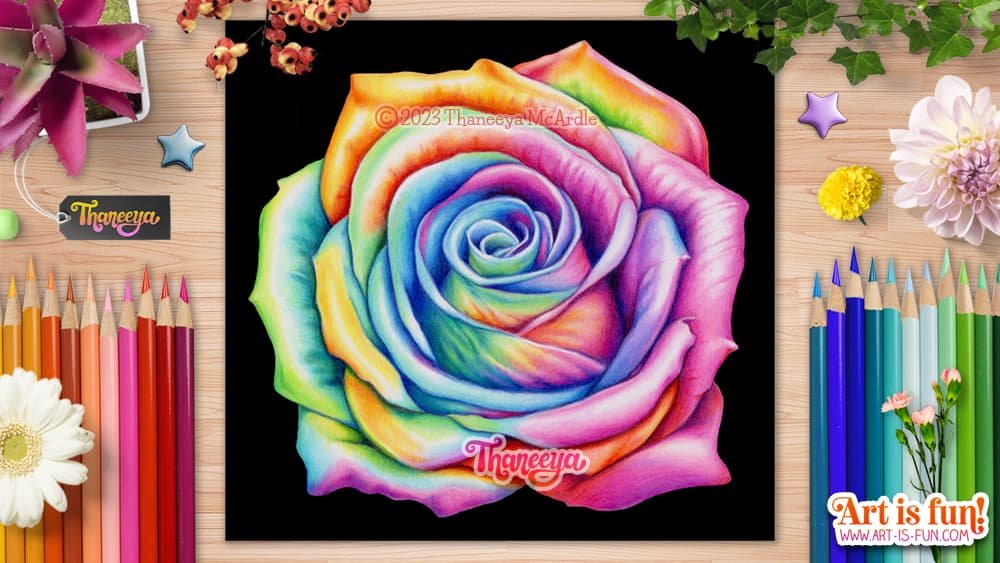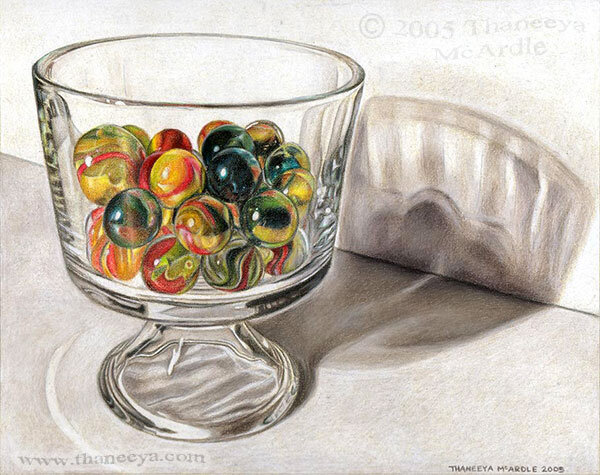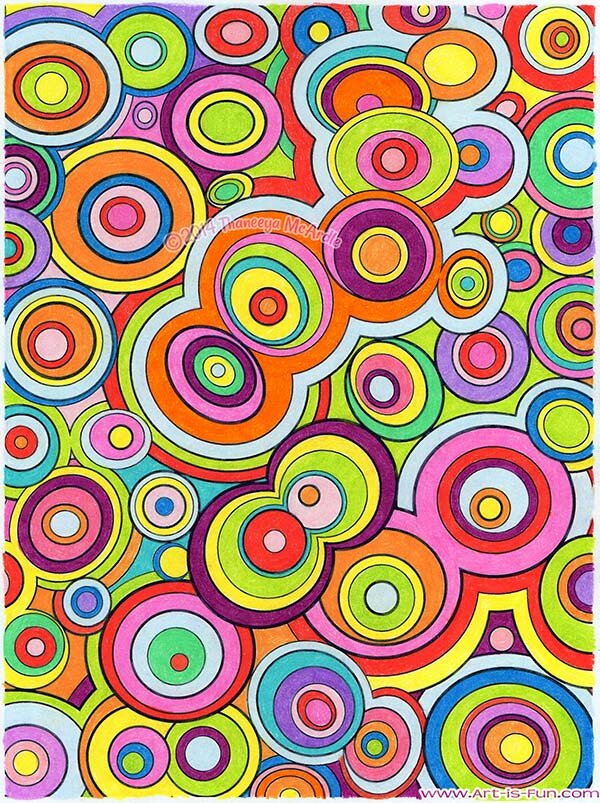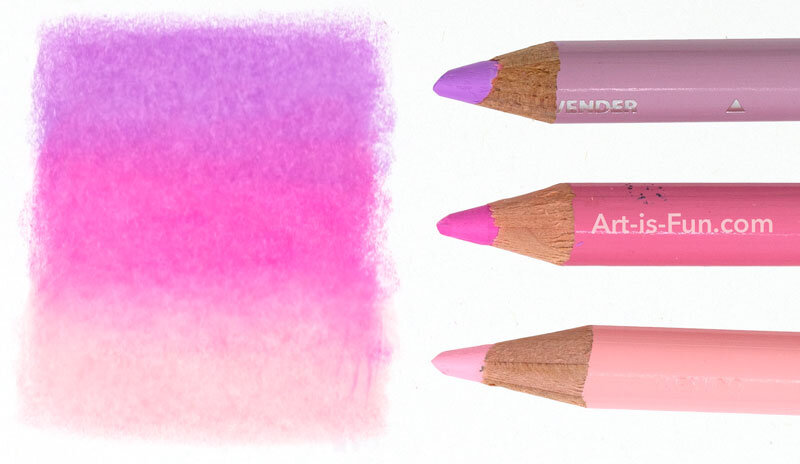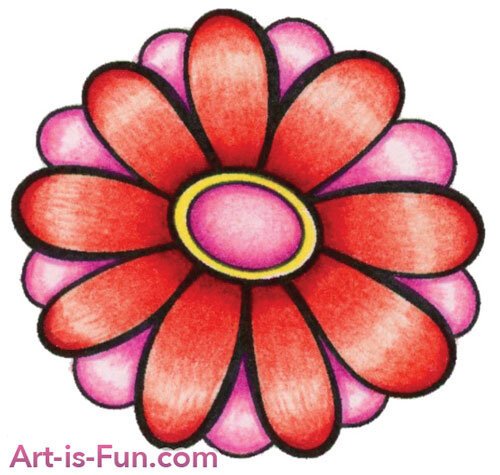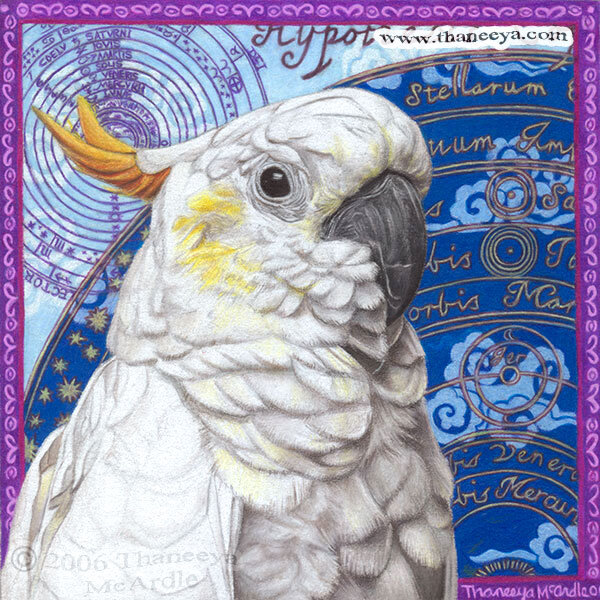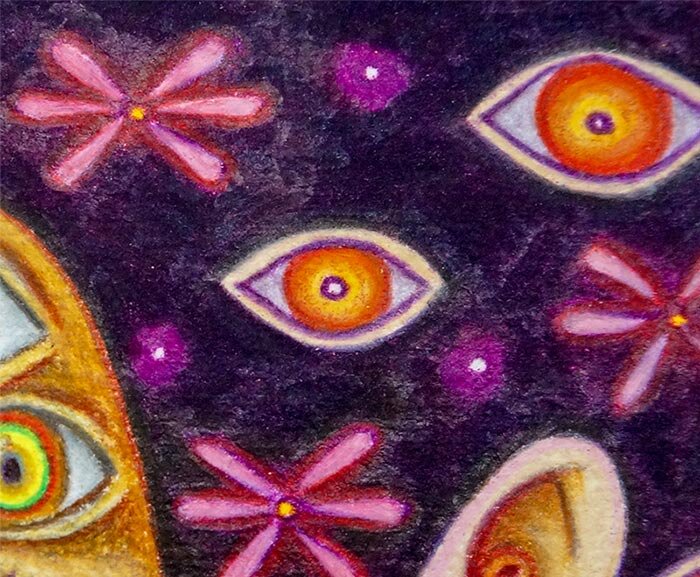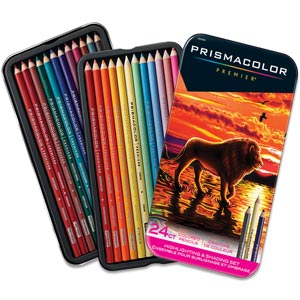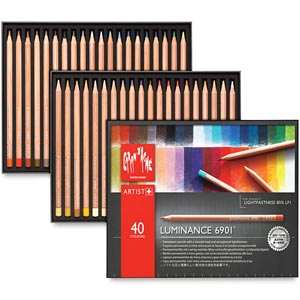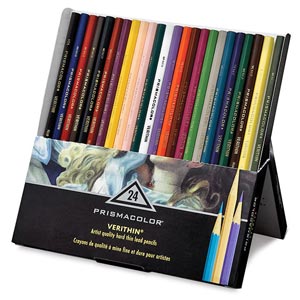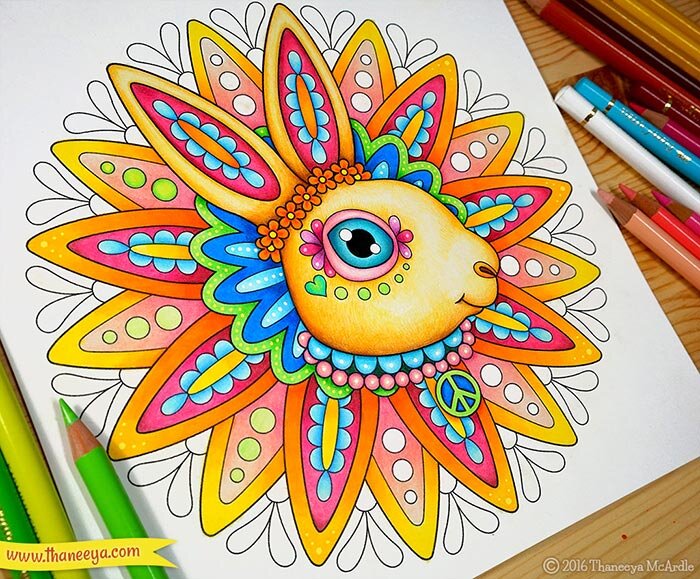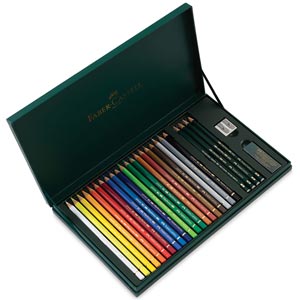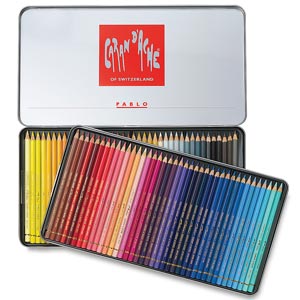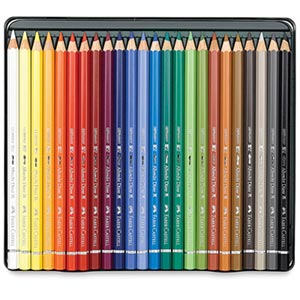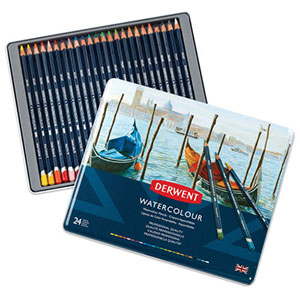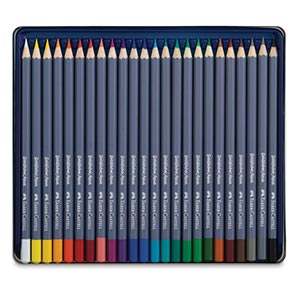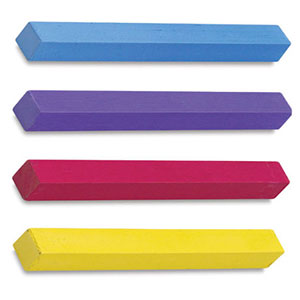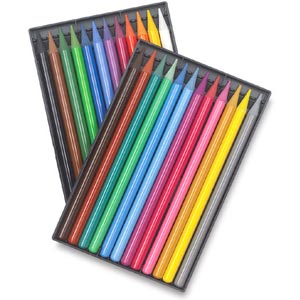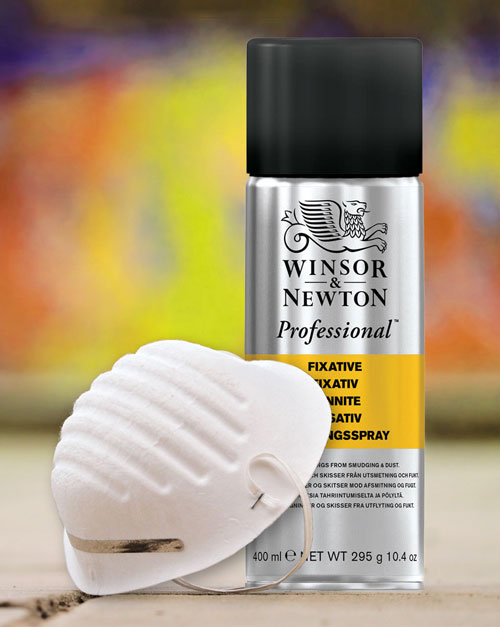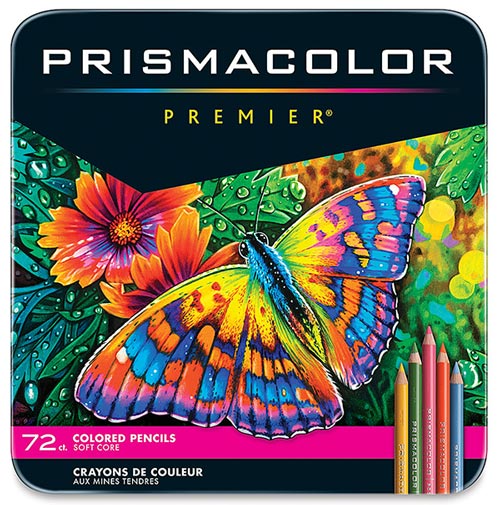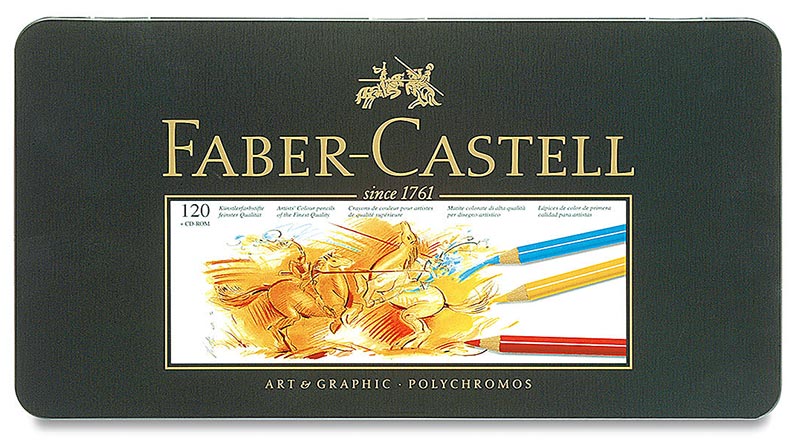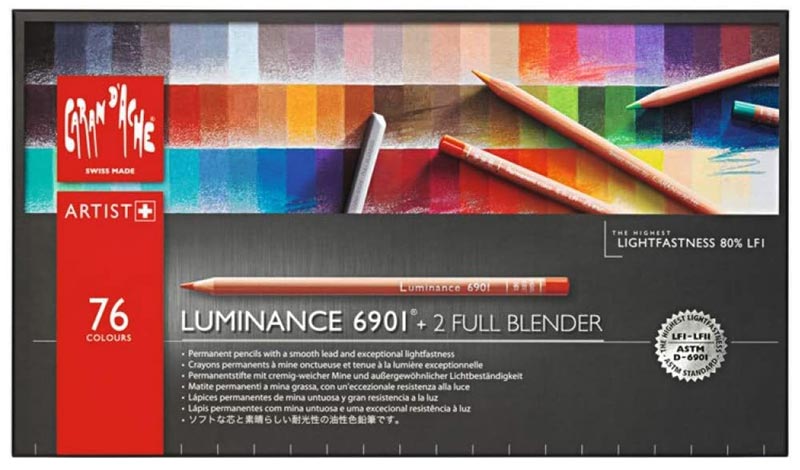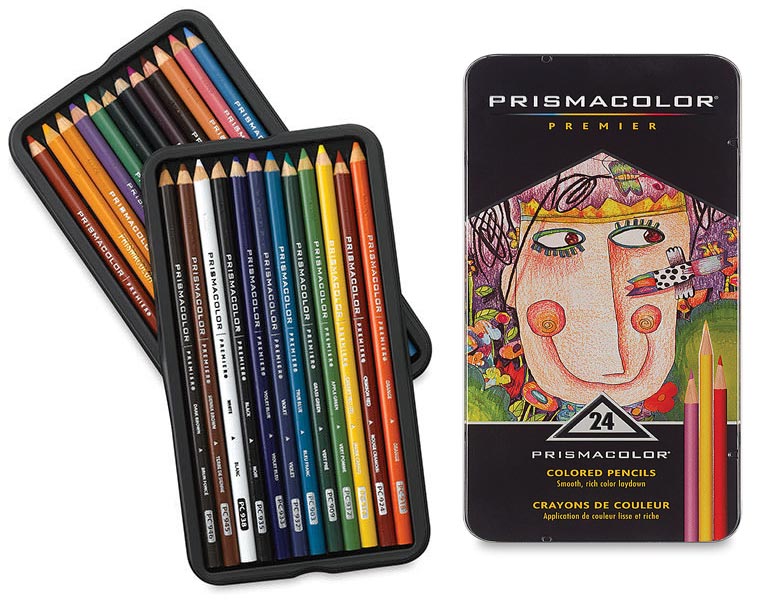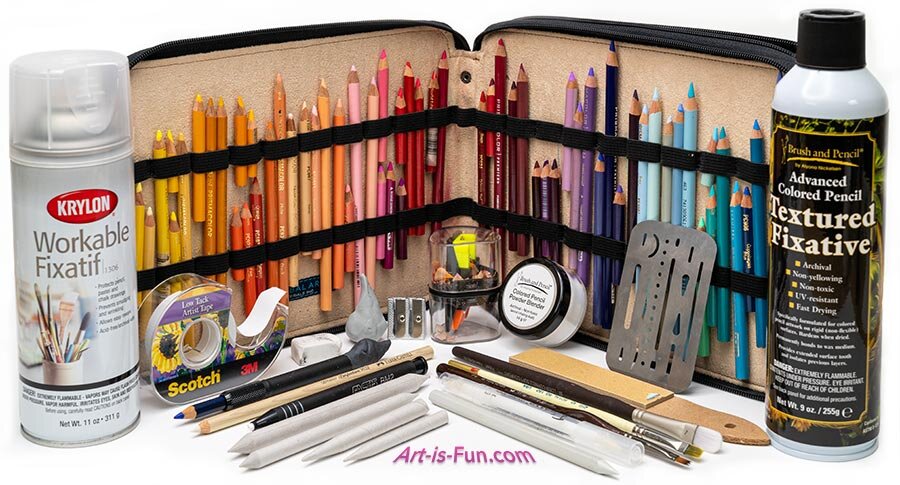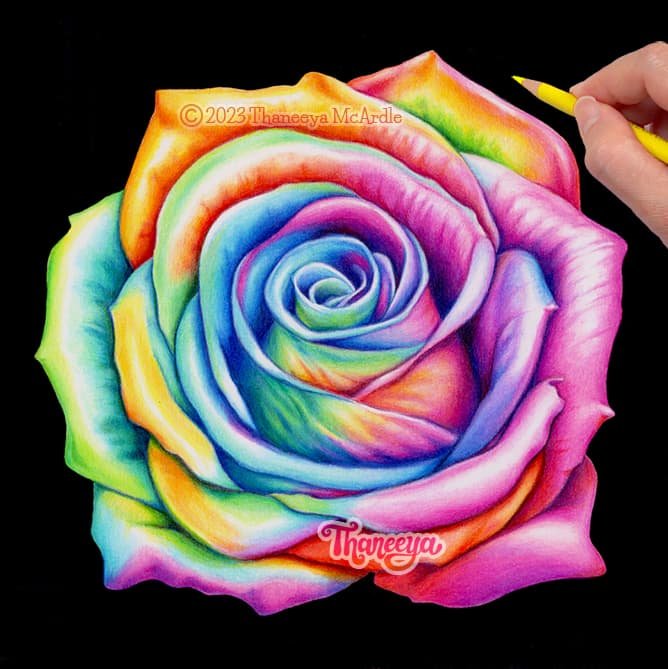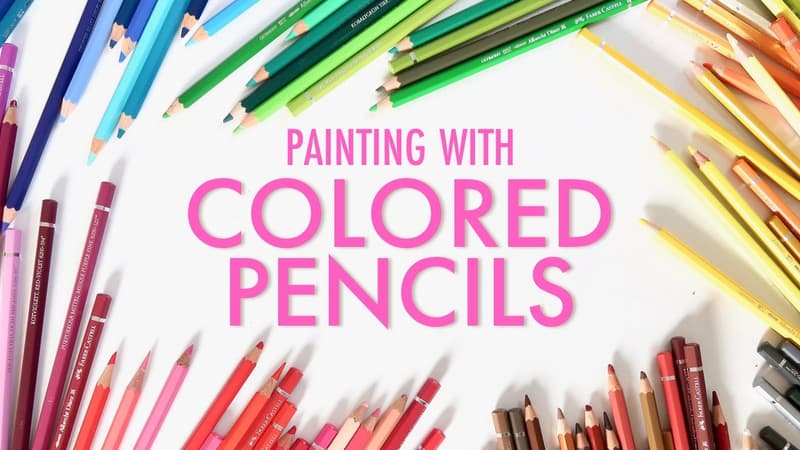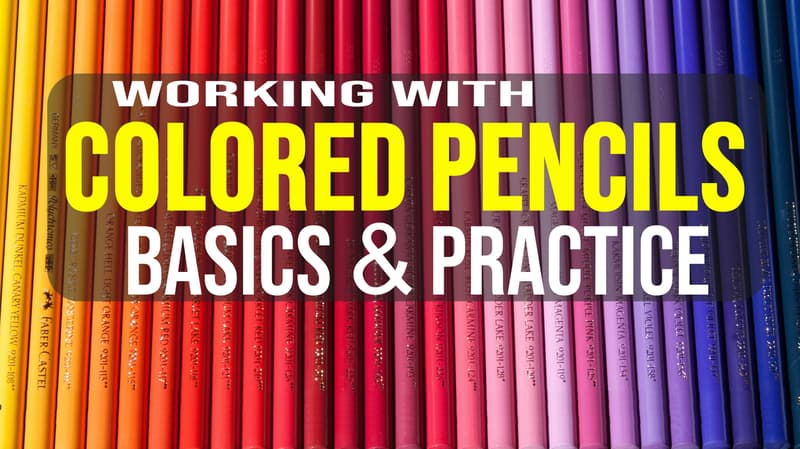Colored Pencils
Colored pencils are a wonderfully dynamic medium that are highly beloved by artists and hobbyists alike because they’re so easy to use—plus they’re a lot cleaner and require almost no set-up compared to most other art mediums!
Whether you’re completely new to colored pencils or looking to learn more about this versatile medium, in this article I'll help you figure out which colored pencils to purchase by covering such important topics as quality, consistency, type, permanence, brand, and what I consider to be the best colored pencils. Read on to learn everything you need to know about colored pencils!
If you're short on time and just want to read about my recommendations, you can jump straight to the Best Colored Pencils section.
Colored pencils have been widely used in classrooms for many decades. You probably used them when you were a kid—remember those hard, gritty sets that were given out to students, with colors that were too pale or too dull to be satisfying? For this reason, colored pencils were long seen as juvenile (in much the same way that markers were overlooked as a fine art medium).
Even when high quality colored pencils emerged in the 1930s, they were mostly used by humble illustrators or graphic designers. Fine artists sometimes used them for sketching and planning, but not for creating finished artworks. This attitude began to shift from the 1960s onwards, as fine artists began to embrace colored pencils for their versatility and ease of expression. These days, they're considered a legitimate art medium, and are also hugely popular with colorists.
Learn the realistic colored pencil techniques that I used to create this vibrant rainbow rose drawing!
Why colored pencils are so popular
Colored pencils are capable of rendering art styles that are expressive and abstract, or detailed and photorealistic. While they're slow to use compared to wet media like paint (in terms of laying down color), they’re almost unparalleled when it comes to control and detail.
Because colored pencils are partially transparent (also known as "semi-opaque"), you generally start with a light application, gradually building up your colors to produce more vibrancy and shading through the layering of different colors. This process is called “glazing” and you can see how I used glazing to create realism in this colored pencil video.
Colored pencils, like watercolors, are famous for their translucent quality, which can give your artwork a striking luminance, especially on textured paper. If you don't press too hard, tiny crevices or valleys in the grain of the paper are left untouched by pigment and allowed to shine through. For an example of what I mean, check out this colored pencil drawing by David Suff.
I used vibrant colored pencils on this coloring page from my Groovy Abstract Coloring Book
With that said, the versatility of colored pencils also allow the application of bold, opaque colors, either by pressing harder, using solvents, or by layering and blending. For example, check out this colored pencil painting by Alyona Nickelsen, the author of the book "Colored Pencil Painting Bible". Note on terminology: colored pencils are mostly associated with drawings, but if they cover the whole support/surface they are often called paintings, and you can see why… they really do look like paintings!
In addition to their versatility, colored pencils are also practical and hassle-free! They're light and portable, so you can travel with them and draw on location. They’ll also last a long time; you don’t have to worry about them drying out like you do with paint or markers. Colored pencils also don't require a bunch of extra accessories that you'd need for a medium like oil paint, for example: you can can achieve a lot with just a simple set, a sharpener, and a humble sketchbook.
While I also enjoy using other art media, like acrylics, few are as relaxing as colored pencils because you don’t have to worry about making a mess, inhaling something toxic or staining your clothes, and afterwards there's nothing to wash or clean-up. With minimal equipment or preparation you can settle in and lose yourself in a frenzy of creativity!
Colored pencils can be blended to create smooth tonal gradations. This can be done easily with layering or burnishing, or with the help of solvents, blender pencils/markers, and even baby oil. You can create blends so smooth that the end result looks like an oil painting!
You can create new hues and tones by layering colors (called optical color mixing), but because you can't mix new colors directly (like you can with paint by mixing one color of paint directly into another color of paint), many artist-grade colored pencils are available in a wide range of colors that can usually be purchased individually.
Blending example
Colored pencils can also be combined with other media, such as graphite, markers, gel pens, watercolors, crayons, pastels, and gouache! My favorite combination is to use markers to lay down lots of vibrant color, and then draw on top with colored pencils to add detail and give the artwork a more organic feel.
Colored pencils are generally easier to remove than paint or markers, but less so than graphite or watercolors. The pigment does lift off, but some color will remain. If you press hard (burnish) or have applied many layers of colored pencils, then the pigment will be more difficult to erase and will likely not erase completely.
You can get erasable colored pencils, such as Prismacolor Col-Erase pencils (affiliate link), if your style requires a lot of erasing. They're also useful for drawing construction lines and base sketches.
Quality
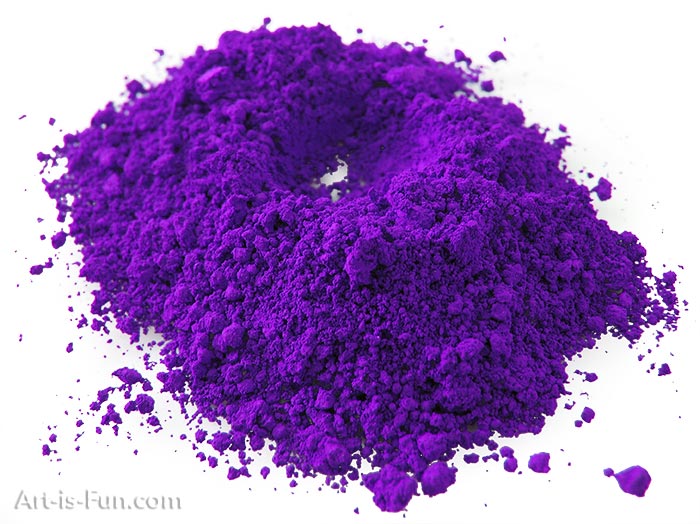
When purchasing colored pencils, there are many different considerations to keep in mind that we'll discuss on this page, but the most important decision you'll make is whether to get "student grade" or "artist grade" colored pencils (those are Blick affiliate links).
If your budget allows, my recommendation is to always favor artist grade pencils, which are noticeably superior. They do cost more, but that's because they contain a higher proportion of pigment, which yields richer, bolder colors.
Artist grade pencils are also more lightfast (discussed below), and usually softer, which makes them easier to use and blend. They will also boast a wider color range, and you'll be able to buy them individually as needed (referred to as "open stock").
Consistency: Soft vs hard
One of the biggest factors that will affect your enjoyment of colored pencils is the consistency of the "lead". This can vary across brands and pencil types, depending on the particular combination of ingredients the manufacturer used.
In general, a colored pencil is just a long circular "lead" – made up of pigment, gum binder, filler (chalk or clay) and wax – that's encased in wood (usually cedar). Manufacturers tweak this recipe to produce pencils that all perform somewhat differently.
Soft colored pencils are preferred by many artists, including myself, because they lay down color easily, and blend well. Some soft colored pencils are smooth and creamy, while others might be crumbly and grainy.
Most artist grade pencils are on the softer side, which is partly because they contain less binder and filler, and more pigment, resulting in bolder, more vibrant colors. One downside with soft pencils is that they won’t hold a point as well and they’ll need sharpening more often.
Hard colored pencils can be sharpened to a very fine point that won’t crumble, allowing fine lines well-suited to detailed artwork and certain textures (like hair and fur). Most student grade colored pencils are hard because manufacturers cut costs by adding more filler/binder and less pigment, which produces dull colors. Hard colored pencils can also be less fun to use, because it takes more work to apply color, blending is more difficult, and they make you want to press harder, which can damage your paper and possibly cause hand fatigue.
But hard doesn’t always mean inferior. For those artists who need hard colored pencils that don’t sacrifice color quality (in other words, hard colored pencils that are still artist grade) there are products like the Prismacolor Verithin colored pencils (affiliate link).
In the image below, you can see a side-by-side comparison of an artwork colored entirely in soft pencils (left) and a work-in-progress using only hard pencils (right). With the soft colored pencils it was easy to press hard and achieve rich, bold colors. When using the hard colored pencils, I utilized a lighter touch to achieve subtle ombrés and shading.
In summary, your preferred consistency partly comes down to personal preference and the style of art you enjoy. Most people, especially beginners and colorists, will enjoy a soft colored pencil that lays down vibrant color smoothly and easily. Some might prefer a firmer, more versatile pencil that won’t crumble as much and is capable of being sharpened to a decent point when needed.
There are three main types of colored pencil: wax-based, oil-based, and water-soluble. You can also get color sticks and woodless pencils, which consist of the same “lead” material. I’ll also briefly address pastel pencils, but they belong in a separate category.
Note: you can mix these different types of colored pencils in the same artwork. They aren’t like oil paint and acrylics (which don’t mix), so you don’t need to worry about committing to a specific brand or pencil type.
Wax-based Colored Pencils
Most colored pencils are wax-based. The right amount of wax gives the pencil a smooth texture which helps the pigment flow across the surface. The wax also helps the mark adhere to the surface or to other layers of pencil, which means that you can put down multiple layers without having to worry about smearing or adhesion (a common issue with pastels).
Wax-based pencils are available in a wide range of consistencies: from the hard pencils made for students, to the soft varieties designed for professionals. Because wax-based pencils are so common, there’s likely to be a particular set that fits your required combination of price, quality, and consistency.
Example of wax bloom
The only downside to wax-based colored pencils is wax bloom, which is a natural oxidation process that can cause the wax to rise to the surface of your artwork, leaving a pale haze. It can take hours or days to appear, but it usually doesn’t occur unless you apply lots of heavy, dark colors, like in the example you see here from one of my artworks. When I first laid down the colors, I made the background a consistently dark violet-black, but over the years wax bloom has lightened some of those dark areas, as you can see in this pic, resulting in a “splotchy” look.
Don’t fret though! If you see some wax bloom, you can wipe the affected area with a clean, dry cloth before applying more color. Once the artwork is finished, you can seal it with a fixative, which will prevent wax bloom from returning.
Depending on your style, wax bloom may never be a problem for you. But artists who use lots of dark colors and heavy layers should consider oil-based colored pencils, which don’t suffer from wax bloom.
I've provided links below to the relevant products so that you can easily find them on Blick, my favorite art supplier. If you make a purchase after clicking on one of these links, I'll receive a small commission (at no extra cost to you). Your purchase helps support this site and keeps it free of ads.
I discuss the best colored pencils below, but my favorite wax-based pencils are Prismacolor Premier Soft Core, Caran d’Ache Luminance, and Prismacolor Verithin.
Oil-based Colored Pencils.
Oil-based colored pencils use oil to bind the pigment and distribute it on the surface (but they still contain some wax). What this means in practice is they have a slightly different consistency and they don’t suffer from wax bloom.
Most oil-based pencils are medium soft: a bit firmer than many wax-based pencils, but still softer than student-grade pencils. Although still quite smooth, they won’t lay down color as quickly as the Prismacolors, for example, but they’re better at holding a point and arguably more versatile. The firmer lead also means that they’re less likely to break, and won’t need to be sharpened as often. Some artists prefer a more restrained application of color, because it gives them more control.
I used oil-based colored pencils on this coloring page from my Hippie Animals Coloring Book
Oil-based pencils do have a few drawbacks, though. They’re more prone to smearing, and are harder to erase. They also tend to be more expensive and may have a more limited color range (depending on the brand). Despite the bump in price, oil-based pencils are not inherently better or worse than their wax-based counterparts.
I personally don't notice much difference between artist quality wax-based and oil-based pencils. When it comes to practical concerns, such as blending and color vibrance, I can happily work with both types. I’ve found other factors, like grade, brand, and consistency to be more noticeable than whether wax or oil was used in the binder. As if to illustrate this point, most manufacturers don't make it obvious if their pencils are oil-based, indicating that it isn't a crucial difference.
Unless you’re worried about wax bloom or prefer the consistency of oil-based pencils, I recommend a high quality wax-based colored pencil that will likely offer a better combination of price and performance.
If you make a purchase via the links below I receive a small commission, at no extra cost to you, that helps support this site and keep it free!.
If you’re looking to try them out, the Faber-Castell Polychromos Pencils are hugely popular thanks to their competitive price and huge color range. Caran d'Ache’s Pablo Colored Pencils are also outstanding oil-based pencils, but they’re a bit more expensive.
Water-soluble pencils (also called watercolor pencils)
Although there isn't a whole lot of difference between wax and oil-based pencils, that is not the case with watercolor pencils! They can be used dry, just like regular colored pencils, but the binder they contain is a water-soluble gum that allows the pigments to be thinned out with water. Artist quality water-soluble pencils are essentially dry watercolor paints in pencil form.
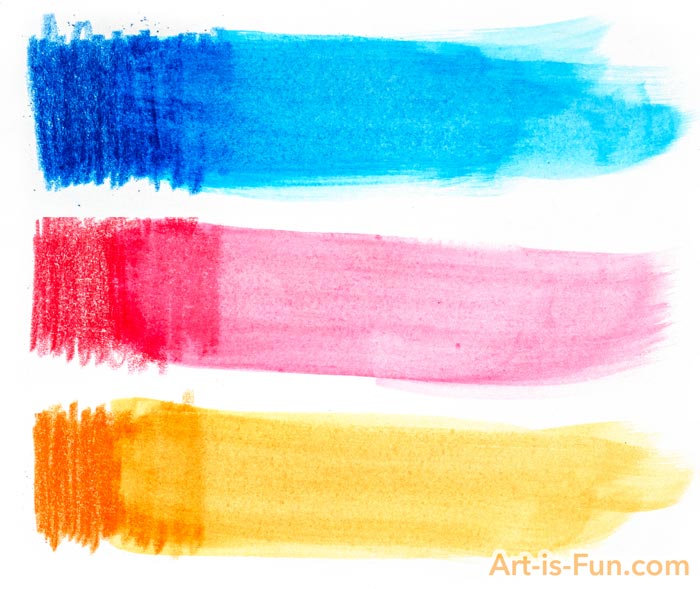
In practice, this means they are fully capable of producing watercolor paintings by combining them with water and a brush or sponge to blend colors or create washes. Other effects are also achieved by drawing on wet paper or dipping the tip of the pencil in water beforehand (creating very soft strokes). Many artists also use them in combination with regular watercolors and other media (including regular colored pencils). They can be difficult to get used to, but if you're fond of watercolors you should definitely give these a try.
If you make a purchase via the links below I receive a small commission, at no extra cost to you.
Just like with other colored pencils, quality differs greatly between brands, with wide swings in cost, even when you limit your search to artist grade products. The very best would have to be the Caran d'Ache Museum Aquarelle Pencils, but they are expensive ($4 each!) and overkill for all but the most serious artists. Faber-Castell’s Albrecht Dürer Watercolor Pencils are professional quality and better value for money (but still around $2.50 each). They offer an impressive 120 colors and a range of sets. Derwent Watercolor Pencils are a little bit cheaper, but still offer outstanding quality from a reliable brand. They have fewer colors (72), but that’s more than enough for most artists.
The three brands discussed so far are still pricey when you consider how cheap student grade pencils are. If you’re on a tight budget, Faber-Castell Goldfaber Aqua Watercolor Pencils are not quite artist grade, but the quality is excellent for the price, and they boast 48 colors that can be purchased individually as well as in sets. They’re a great place to start if you want to experiment with the medium. You can pick up a set of 12 for less than $15.
Color Sticks and Woodless Pencils
Color sticks and woodless pencils consist entirely of the core you’d find in colored pencils, handy for artists who like to lay down a lot of color! They offer all the same benefits of their wood-encased cousins, such as their ability to be used in combination with other art media.
Prismacolor Art Stix resemble crayons, but contain the same pigment mix of 48 selected colors from Prismacolor’s Premier Colored Pencils. They’re useful for laying down more color with broad strokes, but the edges can also be used for lines and some details.
Koh-I-Noor’s Progresso Woodless Colored Pencils are shaped more like regular colored pencils, and can be sharpened and used in a similar way. The barrel is wrapped in a lacquer coating, so they can’t be used as freely (from all sides) as color sticks, but they apply pigment more easily than regular colored pencils.
Pastel Pencils
Instead of wood encasing a lead of wax and pigment, pastel pencils contain the same same stuff you'd find in pastel sticks. The only difference is that the pastel core is made a bit harder so that the "lead" doesn't break or crumble.
Pastel pencils, despite their outward appearance, don't really fall into the same category as colored pencils. While the latter are known for their transparency (discussed above), pastel pencils are opaque and therefore used very differently. It's far more common for artists to use pastel pencils in combination with regular pastels, which is why they're discussed in more detail in my Guide to Pastels article.
Color
Click to enlarge
Because you can't mix colored pencils as easily as other media (like paint) to create new hues and tones, most artist grade colored pencils come in a wide range of colors.
I generally like to purchase as many colors as I can get, but it’s also easy to go overboard. You don’t want to end up buying pencils that you never use. I recommend starting off with a 24-pencil set and then buying additional pencils individually as you need them.
Once you have your pencils, it’s a great idea to make a color chart. This will help enormously when you’re creating art. The nearby image is the color chart I filled in for my 120 Faber-Castell Polychromos Pencils.
I didn’t design that color chart myself. You can often find free, blank color charts that other artists have created by searching in Pinterest or Google Images. Or, for a small fee, you can support independent creators by purchasing color charts directly from individual artists. Some manufacturers, like Faber-Castell, also provide blank color charts that you can use.
If you have the 150-set of Prismacolor Premier Colored Pencils, you can download my free Prismacolor Color Chart (shown below), print it out and fill it in!
All art media can fade over time as light and humidity break down the molecular bonds of the colors. The ability to resist this process is called "lightfastness" and it's a major concern for fine artists who want their work to last.
If you're using artist grade pencils, and you're not a professional artist, I wouldn't worry about lightfastness. Because colored pencils use pigments (as opposed to dyes which fade more easily), artist grade colored pencils will be sufficiently fade-resistant for most artists, especially if you plan to digitize your artwork for the web and/or print (which is where most of my work ends up these days).
If you’re especially concerned about permanence, be aware that it doesn’t just vary across brands, but also amongst pencils of the same brand, depending on the specific pigment used for each color. For this reason, most artist grade brands provide lightfastness ratings for each pencil. For example, here's the Prismacolor Premier Lightfastness chart. Some brands, like Faber-Castell Polychromas, list the rating right on the pencils themselves. If you're really serious, check out the Colored Pencil Society of America, which conducts their own lightfastness testing.
This Faber-Castell Polychromos pencil has a rating of *** (very light-fast)
Mediums
If you make a purchase via the links below I receive a small commission, which helps support this site.
You don't really need to use mediums with colored pencils (except for water if you're using water-soluble pencils).
Some artists like to apply a fixative to their finished works, such as Winsor & Newton Fixative, to prevent smudging and wax bloom, while others don't do this at all. I always use a fixative, for the reasons above, and because it creates a pleasing sheen that I like.
It basically comes down to personal preference. Be aware that using a fixative, which often come in gloss and matte varieties, can change the look of the artwork by intensifying the colors. I tend to like this effect, but you may not, so it's a good idea to test your fixative on a draft artwork. Because of the fumes, I always spray outside.
Check out my Colored Pencil Tools article to learn about other accessories you can use to enhance your colored pencil art. I cover sharpeners, erasers, fixative, blenders, and more!
Brands
When comparing brands, you'll find that they all have a unique combination of price, consistency, permanence, color range, and pigment concentration. Some brands are objectively better than others, but when it comes to the leading brands, much of the difference comes down to personal taste.
In general, my favorite brands are Prismacolor, Caran d’Ache, Faber-Castell, and Derwent. They have proven track records and offer high-quality artist grade products.

Because different colored pencils of every type can be used together on the same artwork, you needn’t feel pressured to pick a brand and stick to it. It's a good idea to buy a few individual pencils from different brands, so that you can try them out and see what you like. Once you discover a particular brand that you prefer, it may be worth the investment to buy a set.
Best Colored Pencils
I've provided links below to the relevant products so that you can easily find them on Blick Art Materials, my favorite art supplier. If you make a purchase after clicking on one of these links, I'll receive a small commission (at no extra cost to you). Read my disclosure statement to learn more.
When buying art supplies I prefer to shop from Blick because you know you'll get authentic products from respected art brands. Buying from Amazon can sometimes be a mixed bag because many products are sold by third-party sellers who might sell imitation products of questionable quality or even counterfeit products disguised as name brands. Thankfully that's never a problem when buying from an established art supplier like Blick!
My overall pick are the Prismacolor Premier Soft Core Colored Pencils, which represent the best combination of price and performance for most people.
I own and enjoy numerous brands of colored pencils, but I’ve been using Prismacolors the longest: 25 years! I have the 132-pencil set and they are what I reach for most frequently when creating art with colored pencils.
Prismacolors are among the softest colored pencils you can buy, and I love their creamy consistency. The huge range of 150 colors, which can be purchased individually or in sets, are vibrant and blend easily. They’re also cheaper than many other artist grade pencils and are widely available in stores.
But they’re not perfect: their softness means they won’t hold a point as well as harder pencils, which can be an annoyance for artists who enjoy detailed work. To counter this problem I also have a set of the Prismacolor Verithin pencils that work well with the Soft Core pencils whenever I need a sharp point for details. However, as proof that you can still achieve amazing detail with soft Prismacolors, check out this artwork by Morgan Davidson that she was able to create with just a 12-color set!
Another gripe with the Prismacolors is that their softness means you’ll have to sharpen them more often, and they can be prone to breakage, so treat them with care. Their lightfastness also isn’t as good as more expensive brands (like Caran d’Ache), likely a result of Prismacolor’s such competitive prices (the best pigments are expensive!).
My pick for best oil-based colored pencils are the Faber-Castell Polychromos Pencils. I have the complete set of 120 pencils and they’re a joy to use. They exceed the Prismacolors in several areas (permanence, durability), but cost quite a bit more. Check these out if you’re worried about wax bloom or the Prismacolors are too soft for your liking.
My upgrade pick are the Caran d’Ache Luminance Pencils. These wax-based pencils are arguably the best colored pencils you can buy, but also the most expensive. In return for their higher prices, you get higher quality pigments that are more lightfast and wonderfully vibrant. They’re not as soft as the Prismacolors (but still quite smooth and creamy), and they suffer from less wax bloom. Unless you’re a professional artist or blessed with a bottomless budget, these are overkill, but I couldn’t help mentioning them as la crème de la crème.
My budget pick are the Prismacolor Premier Soft Core Colored Pencils. As discussed above, these pencils are not without their flaws, but the value for money they offer is hard to beat. I haven’t discussed prices much in this article because they tend to fluctuate (and Blick always has sales), but at the time of writing, you can get a set of 24 Prismacolors for between $20 to $25! Given what you can achieve with these pencils, that’s a bargain!
Paper for Colored Pencils
After you purchase your colored pencils you’ll need to figure out what kind of paper to buy. Shopping for paper can be maddening because there are so many similar paper products on the market! For that reason, I’ve created a separate article to guide you through everything you need to know: Best Paper for Colored Pencils
Colored Pencil Tools and Accessories
My Colored Pencil Tools article will help you find the best sharpener and erasers for your colored pencils. I also dive into optional tools, like blenders, that can really upgrade the capability of your colored pencils to express your creative vision!
Drawing Realism with Colored Pencils
Learn the best techniques for creating realistic art with colored pencils! I’ve included a video so you see how I draw this rainbow rose from start to finish by layering, glazing and burnishing my Prismacolor colored pencils.
Colored Pencil Tutorial
Join me in this detailed step-by-step colored pencil tutorial as I show you how I colored in the whimsical nature scene below from my Woodland Mandalas Coloring Book!
Level-up Your Colored Pencil Skills!
Make the most of your new colored pencils with these easy-to-follow video lessons from Skillshare! Get instant access with a 14-day free trial or use our code, ARTISFUN30, to get 30% off annual membership! As a Skillshare affiliate I get a small commission that helps support this site.
Frequently Asked Questions
Want to learn more about colored pencils? Pick up some handy colored pencil tips and learn some new colored pencil techniques in this handy FAQ about using colored pencils.


